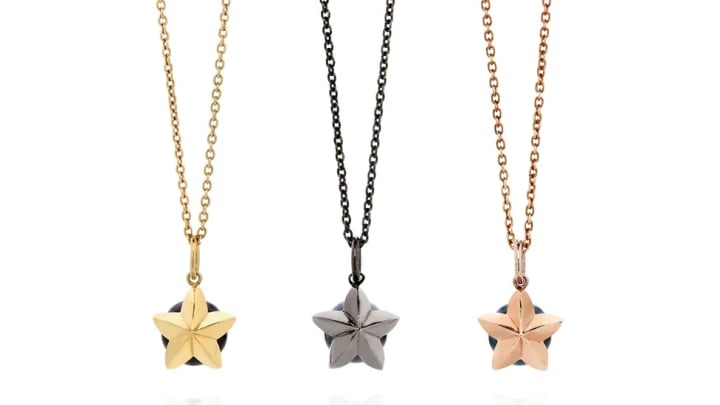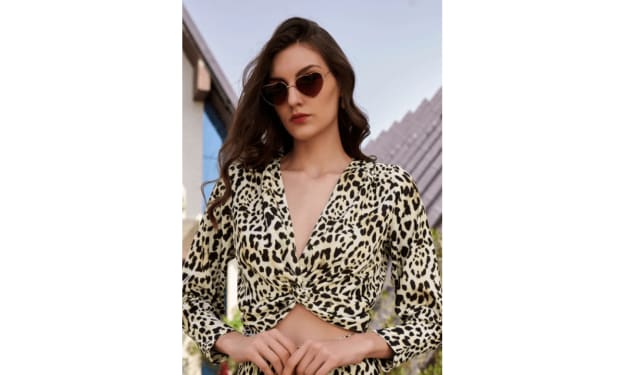
In history there have been times when men have dripped gold and jewels as much as, or even more than, women. In Hans Holbein’s famous portrait of Henry VIII, the imposing Tudor monarch is decked out in gold, pearls, and jewels. A 16th-Century portrait of the nobleman and writer Sir Walter Raleigh shows him in heavily ornate clothing with pearls dangling from both his ear and his cloak. Search for images of Maharajas and Mughal emperors and you wonder how they could move under the weight of their finery. These are looks you aren’t likely to see on men in the 21st-Century.
Or do I speak too soon? In recent years, the codes governing masculinity have been loosening up, and with this the traditional lines between masculine and feminine fashion are blurring. Although jewellery is conventionally a female domain, we’re now seeing men experimenting with it more than ever before.
This evolution has been far from smooth, given that elements of the streetwear constituency are very much attached to masculine stereotypes. When the high-profile rapper Kanye West wore a Givenchy leather kilt on tour in 2011 he caused a hoo-ha. He now looks back at this moment and calls it his fashion “awakening”.
This men’s style glasnost has been a long time coming. In the 1970s, when I was a teenager in western Canada, it was traditional for men to wear a watch (maybe a swanky one) and an austere wedding band, possibly a school or signet ring, and nothing more. These rules applied across North America – and to some degree the western world – with subcultural variations. But in the wake of the hippy era it was becoming fashionable for young men to have one stud earring – note, only one; and it had to be in the correct ear, because one side meant straight and the other meant ‘gay’.
This trend horrified my father, who announced that if I ever came home with an earring I’d be thrown out of the house. To this day, because of my puritan, prairie upbringing, the only adornment I wear is a plain wedding band that looks rather like it has been cut off the end of a steel pipe. And I turned out gay anyway!
What a relief that the latest male style icons are increasingly liberated in their approach, often surprisingly so. The young actor Timothée Chalamet wears prominent bracelets, necklaces, and rings. He made waves by attending one event in a glittering Louis Vuitton harness that was like an immense piece of jewellery in itself. Clearly, Chalamet is at ease with his sexuality, and is not averse to either flamboyance or experimentation.
The actor Chadwick Boseman is similarly free-wheeling and uninhibited in his style choices. He is especially interesting because he played the lead in the Marvel film Black Panther, essentially a conventional macho comic-book hero. But that film is also famous for breaking a lot of rules, and so is Boseman. His dress often plays with notions of how a man should look. He recently caused a stir when he appeared at an awards ceremony wearing three very large diamond brooches by Tiffany & Co. And the consensus is that he is a trend-setter.

In the world of hip-hop, heavy gold chains and bracelets, medallions, rings, earrings, mouth grills, tooth caps and mobile-phone covers in precious metals and stones have become mainstream style signifiers. This subcultural take on style also draws on the informality and improvisation of the street. But in the case of rap and hip-hop culture, male flamboyance of dress, although it is highly politicised racially, has had little to do with gender liberation; often the opposite, as the amount of gold and gems a man wears could be said to correspond to his position in the masculine pecking order.
Even this subculture, though, one of the bastions of rigidly defined hyper-maleness, seems to be vulnerable to change. Hip-hop artists such as A$AP Rocky and Offset have been experimenting with traditionally feminine, Holly Golightly-style baubles, including smooth pearls, layered single-strand diamond necklaces, and diamond encrusted rings and earrings. Offset’s jewellery collection is worth many millions of dollars. For a detailed catalogue of his and A$AP’s jewellery, just look at their Instagram feeds, where it is on prominent display.
Cultural shift
To understand the shift in men’s jewellery, one need only look to the Goldsmiths’ Company in London, UK, one of the venerable medieval guilds, which has supported and been a focus of metal and jewellery crafts for many hundreds of years. Harriet Scott and David Mills of the Goldsmiths’ Company say that men are looking for more and “higher quality precious pieces… men are spending more on themselves and are increasingly interested in decoration other than watches,” they tell BBC Culture. And they expect the men’s jewellery market to expand for the foreseeable future: “The first men’s jewellery retailer that offers a broad range of fine and demi-fine jewellery specifically for men is destined to be a massive success.”

The annual Goldsmiths’ Fair, bringing together leading-edge UK craftspeople, provides a good window into what is happening in the sector at its design source. Men’s jewellery, and pieces suitable for anyone, are more prominent than ever. The work of three people at the 2019 fair lends itself in intriguing ways to the growing market for men.
The comedian Russell Brand is fond of layered jewellery, especially bracelets and necklaces, and the London-based designer Tomasz Donocik is one of his favourite makers. Donocik started making jewellery for men in Japan which, along with China, are huge markets for him because it is more common for young men there to experiment with jewellery, and his following in the West is growing. He points to Harry Styles as an example of a new wave of fashion-conscious young men interested in jewellery.
Donocik’s long necklaces are designed for casual layering, and so tend to be fine. His bracelets, often in leather and precious metals, are big sellers currently, although he has plans to launch a whole website aimed at men. His aim is to “create modern-day heirlooms for men and women”, and the emphasis is on quality and customisation.

Josef Koppmann, also a London-based designer, creates pieces that are spare and beautiful, and inspired by the geometries of modernist architecture, be they organic (he mentions that he loves the buildings of Oscar Niemeyer), Bauhaus, or brutalist. His designs for men often use rough diamonds – which have a strange, satisfying, low-key glitter – but he works with a range of materials, including gold, silver, and leather, and stones that are both precious and non-precious.
Like many of the edgier jewellery designers, he loves collaborating with clients, and has produced some bespoke pieces. He observes that the demand for men’s and unisex jewellery has been growing, and he is excited by the trend. Fans of his work include designers from a range of other fields, such as architecture.
Caiyang Yin trained in China and Scotland, and is currently based in Birmingham, UK. He has won several awards, and aims to design pieces that are “interactively kinetic or static”, often like miniature sculptures, and not geared towards a “specific gender”. He aims to make pieces for those who wear jewellery to express themselves rather than as a symbol of wealth, and is happy to take jewellery design to the wilder shores of innovation: his kinetic silver “knee-jerk” brooch, for example, was inspired by the little hammers that doctors use to test reflexes. His “face” brooches, although perhaps more conventional, are distinctive and haunting.
Taken as a whole, the growing trend for male jewellery can only be heartening. Men’s dress has traditionally been rather dull, and increased ornamentation, especially when it is combined with other adventurous style choices, is exciting to look at. It is unlikely that men will go around encrusted in gold and jewels like Tudor lords anytime soon, if only because of the cost. Still, up to now, women have had most of the fun; maybe it really is time for men to have a turn. Who knows, one day soon maybe even I will dare to wear an earring.
About the Creator
Mejra
Later, respectively, wander and suffer sorrow.






Comments
There are no comments for this story
Be the first to respond and start the conversation.